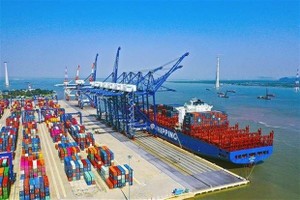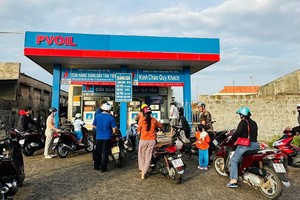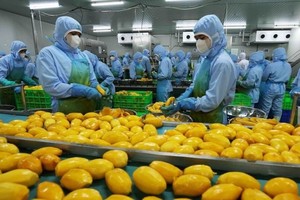
In general, in the first seven months of this year, the IIP surged by 7.9 percent compared to the first seven months of 2020. This result reflects the negative impact on the economy of the fourth Covid-19 outbreak with a new SARS-CoV-2 virus variant and complicated developments.
Among 19 provinces and municipalities in the South that have implemented social distancing following Directive No.16/CT-TTg to prevent the Covid-19 pandemic, seven localities saw decreases in the IIP in July while 12 posted increases.
Specifically, Ho Chi Minh City dropped by 19.4 percent, Long An 14.6 percent, Ca Mau 13.7 percent, Dong Thap 5.7 percent, Tra Vinh 5.3 percent, Ba Ria - Vung Tau 1.9 percent, and Ben Tre 0.2 percent. However, some localities had an increase in the IIP because some industrial parks determined not to disrupt the supply chain and ensured the disease prevention requirements with the three-on-site production, so they were allowed to operate to continue to fulfill previously contracted production orders. Specifically, Bac Lieu climbed by 13.7 percent due to an increase of 137.6 percent in electricity generation; Binh Phuoc went up by 12.2 percent due to an increase of 29.5 percent in food manufacturing and processing; Hau Giang edged up by 10.1 percent due to an increase of 3.3 percent in food manufacturing and processing, an increase of 27.2 percent in the production of leather and related products, and an increase of 76.4 percent in beverage production.
Despite being heavily affected by the Covid-19 pandemic, the IIP in the first seven months of this year of some localities still grew compared to the same period last year, including Binh Duong with an increase of 7.4 percent, Can Tho with 7.2 percent, Dong Nai with 7.1 percent, Tien Giang with 3.1 percent, and Long An with 3 percent.
In the first seven months of this year, some major industrial products that posted increases compared to the same period last year consisted of rolled steel, cellphone components, automobiles, leather footwear, crude iron and steel, mixed NPK fertilizers, mobile phones with an increase of 14.1 percent, and casual clothes with 9.5 percent.
On the contrary, some products that decreased compared to the same period last year included natural gas with a decrease of 13.4 percent, televisions with 10.3 percent, refined sugar with 9.5 percent, urea fertilizers with 7.4 percent, crude oil exploitation with 6.8 percent, monosodium glutamate with 5.1 percent, and clean coal with 2.8 percent.
























